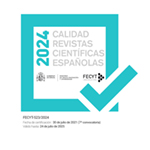El desarrollo de la sociedad urbana en el Altiplano Central mexicano durante el Formativo y la transición al Clásico
Resumen
Durante los dos milenios denominados periodos Formativo (1500 a.C.-100 d.C.) y Clásico (100-650 d.C.), las sociedades del Altiplano Central mexicano realizaron muchos de los cambios claves típicamente asociados con la complejidad social pre-moderna. Estos incluyen la transición a una vida agrícola y sedentaria, la creación de centros urbanos con arquitectura monumental, diversificación de la producción, intensificación de redes de intercambio, diferenciación de estatus y desigualdad social; así como la apariencia de dioses, símbolos y espacios sagrados de un sistema religioso compartido y de larga duración. Este resumen se enfoca en tales transiciones, sobre todo durante el intervalo aproximado comprendido entre el 600 a.C. y 250 d.C., que cubre los períodos designados como finales del Formativo Medio, Formativo Tardío, Formativo Terminal y el inicio del Clásico Temprano.Descargas
Descarga artículo
Licencia
La Revista Española de Antropología Americana, para fomentar el intercambio global del conocimiento, facilita el acceso sin restricciones a sus contenidos desde el momento de su publicación en la presente edición electrónica, y por eso es una revista de acceso abierto. Los originales publicados en esta revista son propiedad de la Universidad Complutense de Madrid y es obligatorio citar su procedencia en cualquier reproducción total o parcial. Todos los contenidos se distribuyen bajo una licencia de uso y distribución Creative Commons Reconocimiento 4.0 (CC BY 4.0). Esta circunstancia ha de hacerse constar expresamente de esta forma cuando sea necesario. Puede consultar la versión informativa y el texto legal de la licencia.









